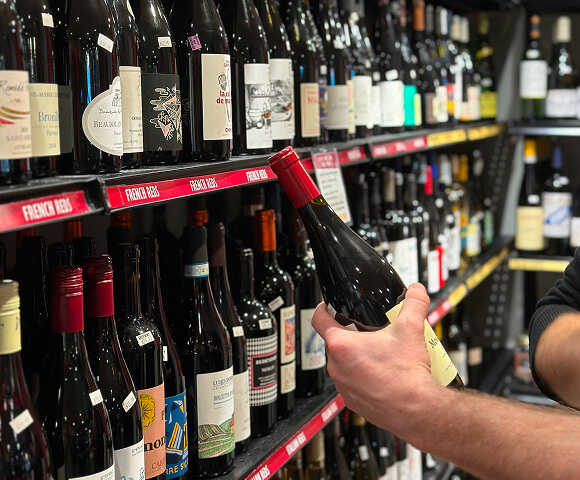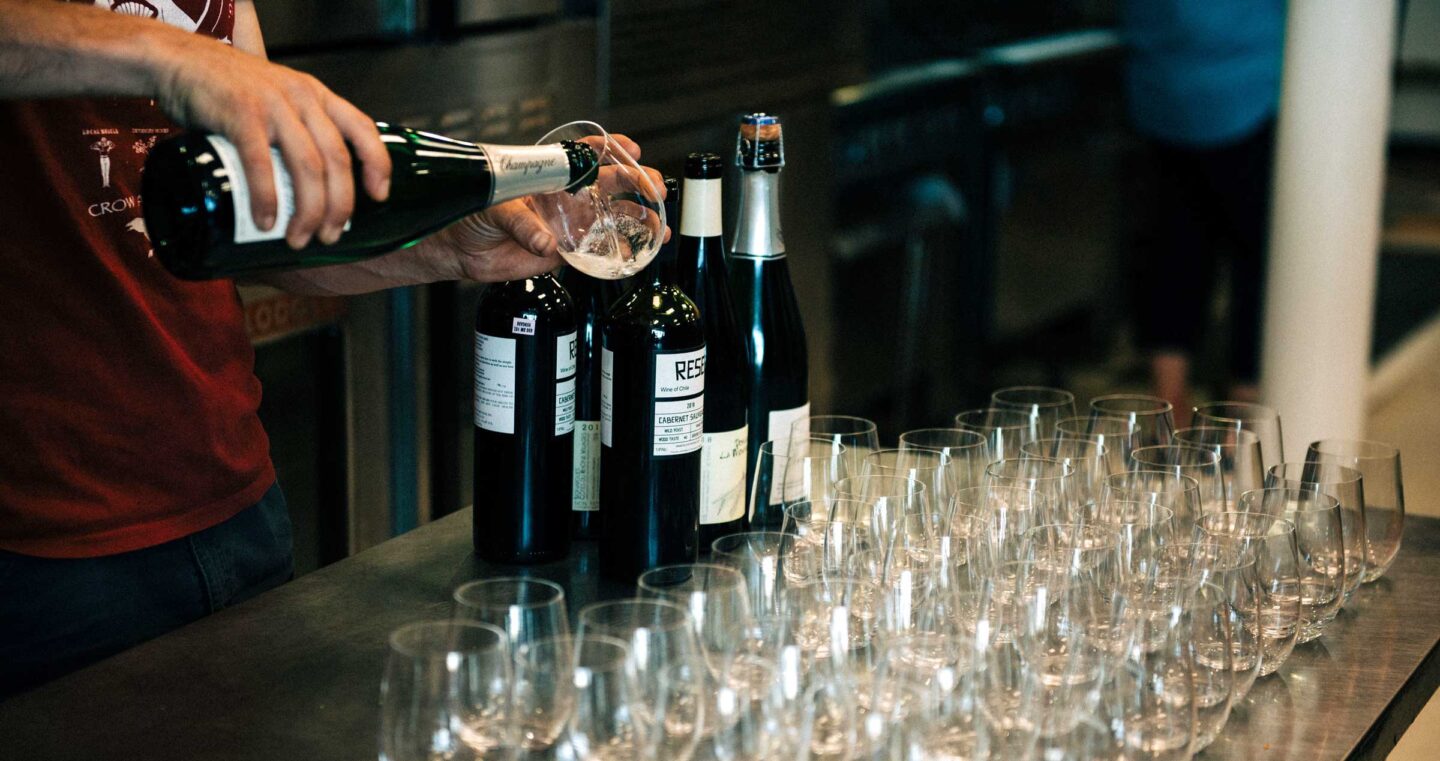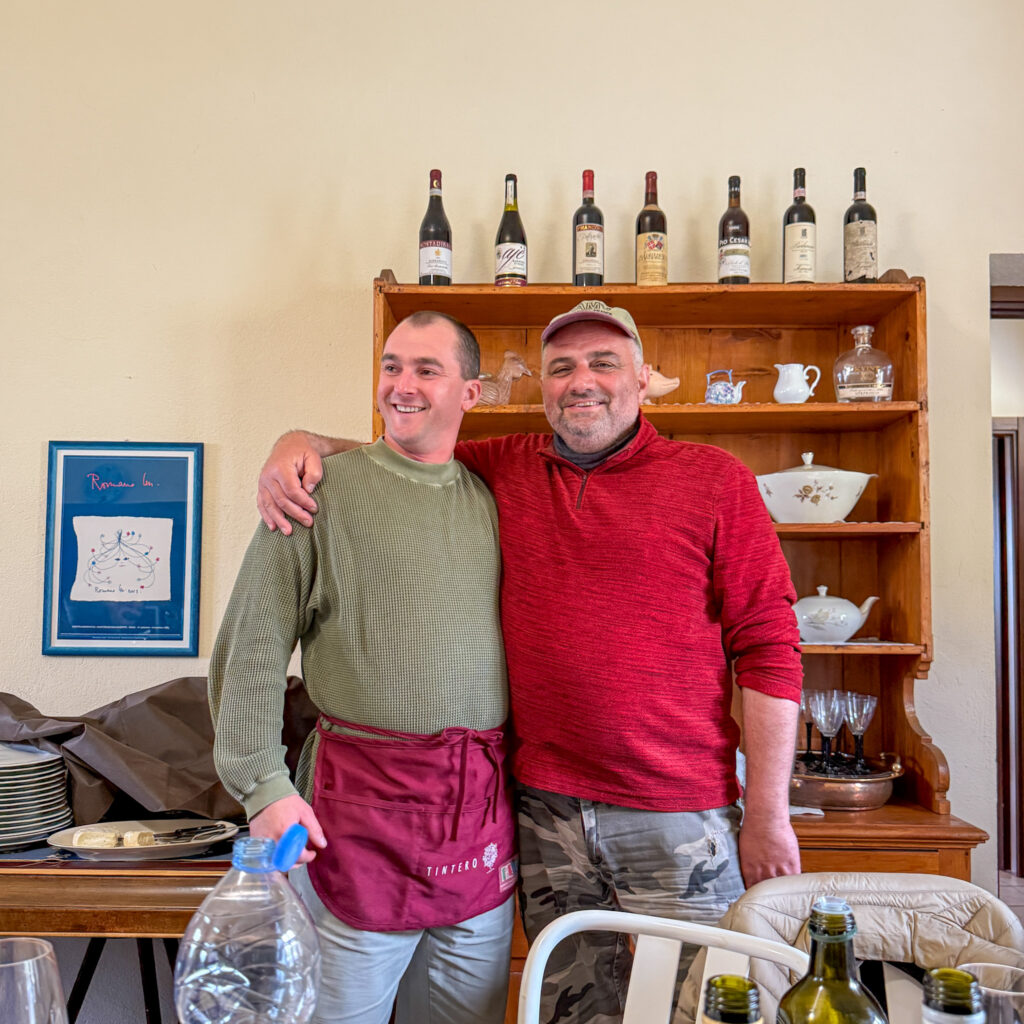Great Wine Picks & Inspiration
Di Majo Sangiovese
A great 100% Sangiovese (organically grown grapes) perfect for colder months. It’s from Molise, an area south of Abruzzo in central Italy, and this relatively warm area gets those grapes super ripe and rich. Noticeably fuller-bodied and more black-fruited than most Tuscan Sangiovese, as if Malbec and Montepulciano had a child in the warm sun, then celebrated with barbecue. For hearty meals where the meatball sauce dribbles down your cheek a little and some bits of eggplant parmagiana get caught in your beard.
Bagordi Rioja Cosecha 2015
This Rosemont classic represents so much of what we hold dear, and is an incredible value on traditionally made wine from organically grown grapes. A young “harvest” style Rioja where the Garnacha/Tempranillo blend ages only six months in used oak, it’s alive and quaffable and super easy drinking, but with Rioja’s trademark medium body, spice notes, and savory balsamic character. A brilliant, versatile wine that, yup, would be great for Thanksgiving.
Lisini San Biagio Toscana 2015
From a terrific old-school producer in Montalcino, famed for Brunello, comes this approachable but totally genuine 100% Sangiovese with real soul. There’s some tannin and structure that makes it perfect for cold/rainy night meals, but an incredibly luxurious, silky mouthfeel that you’ll be powerless to resist. This is the heart of the heart of Italy.
Essay White
A satisfying, terrifically well-balanced wine from South Africa, home of some of the world’s greatest Chenin Blanc vineyards. The structured, dense Chenin is blended with Viognier for aromatic enticement and Rousanne for necessary cut. For a broad, layered cool-weather white, this is the whole package and at an unbeatably low price!
Corte Dei Papi Cesanese
If you’re ever in a Roman Trattoria and wondering which wine to order, go with the Cesanese. It’s the great indigenous grape of Lazio, the region surrounding Rome. Great balance of deep-n-real Italian-ness with lovely floral aromas and crushed-berry fruit. If you’re ever not in a Roman Trattoria and you’d like to be, you could just order a thin-crust pizza and buy this wine. It goes with everything you eat, except maybe scallops.
Vizcarra Senda Del Oro Ribera Del Duero
Such a pure and elegant wine, a rare mix of finesse and depth, with a wonderfully saturated, creamy mouthfeel. Ribera del Duero, in north-central Spain, is a fascinating place to grow grapes and make wine. It’s rocky and dry, leading to significant stress on the vines, and character! 100% Tinto Fino (Tempranillo), from 20-70-year-old vines grown in sandy limestone soils at high (2,700′) elevations. Deep red fruit flavors, surrounded by spice, incense, dried flowers. Drink it with some moderately spiced foods: barbecue, cajun, or pulled-pork tacos!
Domaine Des Cassagnoles Reserve Select
What we want in a midweek white wine, somewhat Sauv-Blanc-y in character but the indigenous Gros Manseng grapes yield a somewhat fuller mouthfeel and waaay lengthier finish than any sub-$15 Sauv Blanc we know. We are so, so glad this is available again! We can’t think of a white wine Rosemont customers have bought more by the case than this exceptional Gascogne blanc from France’s Southwest. There’s some skin maceration and a good deal of lees contact in stainless steel, so the herbal zing and deep citrus notes are fleshed out into a surprisingly complex wine.
Domaine De Fondrèche Blanc
From the snowy, windswept Mont Ventoux in France’s southern Rhône Valley, this is a Rosemont staff favorite and semi-geeky cult classic for some in-the-know customers.An exotic, multi-layered white wine that nonetheless stays honed and clean throughout its long, beguiling finish. The grapes – Grenache Blanc, Rousanne, Clairette and Rolle – are organically grown, then fermented in concrete eggs, and the wine sees almost no sulfur whatsoever. Waxy and full in the mouth, lovely floral aromas, piercingly mineral and loaded with lemony verve. A total wow-what’s-this?! wine, so plan to share it with friends!
Valle Reale Montepulciano D’abruzzo
This is an ideal midweek central Italian red, when you want some spiciness and body but without the clunkiness that hangs on the fringes of too much Montepulciano. The key is the terroir: high-elevation organically farmed vineyards in a national park, some of which are south-facing and get plenty of sunlight while others are shielded from direct sun and so retain coolness and freshness in the grapes. Native-yeast fermentation, no funny business. The wine is pure and clear, full of life, and just fun to drink.
Borgogno Barbera
Barbera can be all over the map, but when this classic Italian varietal, indigenous to Piedmont, is farmed well and treated right in the cellar, it’s a wonder to behold. Borgogno is an exceptional Barolo producer, but this Barbera is what they drink on an everyday basis while they wait for the Barolo to mature. Barbera’s naturally high acidity keeps it vibrant and scrumptious for dining versatility, while long aging in large Slavonian oak casks lends depth, seriousness of purpose, and savory splendor. Food companions can run the gamut, from simple tomato salads and interesting cheeses to grilled meats and veggies.
Mas Carlot Rosé
There’s a lot of southern French rosé out there, and therefore a lot that’s boring, but this one from Costières des Nîmes is really good. Our friend Nathalie Blanc-Marès farms her red clay and limestone soils, filled with galets roulés (the rounded stones for which Châteauneuf-du-Pape is also famous) completely sustainably and lovingly, and the wine shows it. It’s got the rose-petal aromas and red-fruit flavors we all crave, and a voluptuous mid-weight mouthfeel offset by spicily refreshing finish.
Chanzy Chardonnay
Totally classic Villages-quality white Burgundy, from a standout producer in the heart of Meursault. Pure limestone subsoil lend a toothsome mineral cut, with the thin layer of clay on top endowing the wine with amplitude and roundness. If you think you “don’t like Chardonnay”, you’re just wrong and this wine will convince you. (If you already know the truth about true Chardonnay, thanks for telling everyone you know!). The wine ages on lees in used oak for a year before bottling. No tropical fruit, no obscene buttery-ness. Just purity and pleasure.
Perdera
A delicious medium-bodied red from the island of Sardinia, from sustainably grown Monica, a grape indigenous to that island. The wine has a great combination of bright red fruit, dusty grip on the palate and vivid acidity. It bursts with personality and is incredibly versatile at mealtimes, a bit like a good Sangiovese but slightly spicier and darker. Chill the bottle for 20-30 minutes and then go for it!
Pentimento
Our dear friend Michele D’Aprix, the only American woman making wine in Bordeaux, puts her heart and soul into the Château Beausejour Pentimento. It’s a classic Right Bank blend of majority Merlot with the remainder Cabernet Franc, all of the grapes grown organically, aged in used French oak barrels. It tastes simultaneously super traditional and sleekly contemporary. Not at all stuffy or intimidating, this is just delicious Bordeaux, full of authentic character and drinkability.
Le Grand Ballon Sauvignon Blanc
A perfect midweek wine for high summer in Maine! It’s just a super pretty, floral, dry white from France’s Loire Valley, great for simple, casual meals (think of fresh goat cheeses, interesting salads, white fish with lemon) or no meal at all. The signature lime and white grapefruit notes are there, but it’s set apart by its softness and inviting roundness on the palate. None of that overly acidic, grassy aggression you find in too much inexpensive Sauv Blanc.
Arcan Albarino
Even if you’ve drunk Albariño before, the Arcan is going to come as an enormous, thrilling shock. It’s such a complete package of mineral punch, ripe fruit and scintillating acidity. The small-production wine is made by mussel farmers (!) in Rias Baixas, Galicia, in far northwestern Spain, right on the coast. Even more specifically, the vineyard is from the renowned subzone Val do Salnés, which produces the world’s greatest Albariño. The grapes are grown organically, on old vines growing in granite-based soils, fermented with native yeasts and aged on the lees for five months, all in stainless steel. Everything about it tastes like the coast of Maine – that salty wet-stone quality, piercing purity, and an incredibly long finish. Please pick up some mussels or oysters to go with!




